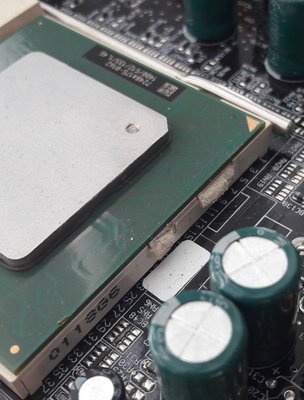First post, by gex85
Hi guys,
one of my mainboards that I bought off eBay during the last months, the ECS P6S5AT, somehow "lost" the retention prongs on one side of the socket, probably due to improper handling in the past or during transport.
If this was a usual, widespread 440BX or i815 board, it would probably go to recycling. But having the SiS 635T chipset which supports DDR memory and being one of the most stable S370 boards (at least that's what most reviews say), I really want to save it.
There's just enough left of the prongs to keep the cooler in place when mounted carefully, but I'm afraid it might come off once the case is moved around (or just fall off without any prior warning), damaging other components.
The board has no heatsink mounting holes whatsoever, and currently I can't think of any practical solution to my problem, apart from glueing the heatsink to the heatspreader with thermally conductive adhesive, which feels very wrong.
Any ideas?
